Light Switch Timers Buying Guide
Discover everything you need to know about light switch timers and the best products available in our guide.

What is a Light Switch Timer?
A light switch timer is an electronic mechanism that controls lighting within a domestic or commercial environment. They are often installed to save energy and can be controlled either manually or electronically via a digital display.
Light switch timers may be used to manage lighting levels over a two, five or seven-day basis. The installation process usually involves the replacement of existing light switches. However, there are some versions which can be fitted on top of such switches.
Types of Light Switch Timers
Lighting time switches are commonly fitted for the purpose of minimising electrical consumption and associated costs. The improvement of property security is another common purpose. They can be used to maintain lighting, giving the impression that people are present at a property. It is necessary to remove the conventional light switches and fit programmable timers in most instances.
Automatic Light Switch Timers
Automatic light switch timers can be used to vary the lighting levels at different times of day and night. You need to set the preferred lighting pattern, ensuring different levels of illumination at different times. Common features of these light switches include automatic summer/winter change over, clear LED/LCD screens, and internal batteries.

Programmable Light Switch Timers
Manufacturers offer a range of programmable light switch timers featuring different numbers of on and off settings. The timers could be integrated across as many as 56 memory locations. These devices also have a random setting, which allows for the projection of different lighting levels to give the appearance that there is someone at home. The programmable switches offer higher levels of versatility than the mechanical alternatives. However, they do require more complex programming.
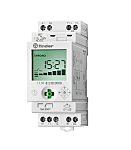
Wireless and Smart Light Switch Timers
These light switch timers can be controlled remotely, using a variety of digital devices. Smart timers can be adjusted via a smartphone or tablet. Some of these timers can also be connected via Bluetooth for voice control.
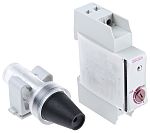
Digital Light Switch Timers
There is a wide variety of digital light switch timers with easily readable displays. They can be used to modify the levels of lighting at different times throughout the day and night. These switches can be easily fitted and programmed.

Exterior Light Switch Timers
Exterior light switch timers can be used to vary the levels of lighting across a range of outdoor environments. They have similar functionality to indoor timers but may be used to illuminate porches, patios, and other outdoor areas. Some models allow you to monitor natural light levels and turn the lights on in accordance with user settings. They are also waterproof and suitable for year-round use.

Light-Sensitive Light Switch Timers
Light-sensitive switch timers allow for the monitoring of natural light levels throughout the day and night. They can be set to switch on when the natural lighting falls below a particular level.
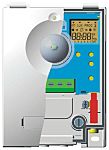
Miniature Light Switch Timers
Miniature timer switches are suitable for installation in a wide variety of switch boxes, including the smallest EU standard switch box. Some models can be controlled remotely via smartphones and tablets. As the name suggests, they are compact and ideal for stylish living spaces.
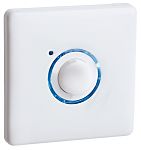
Staircase Light Switch Timers
Staircase switch timers can be installed to light staircases, corridors, or lobbies. They can be set to maintain the lighting levels for as long as it takes the person to walk up or down the staircase.

Twilight Light Switch Timers
Twilight switch timers can be used to light various outdoor environments. They can be attached to wall mountings and set at different time delays, depending on the variations in lighting required.

Multi-Channel Light Switch Timers
Multi-channel light switch timers allow for simultaneous control of two or more channels with independent output. They can be used to set lighting levels across a variety of indoor and outdoor environments.

How to Install a Light Switch Timer Safely
Light switch timers should be installed in accordance with written instructions and diagrams provided by the manufacturer. It is advisable to contact an electrician if you are concerned about safety or unsure of the correct procedures for installation. The complete installation is expected to take around 15 minutes.
The installation process should be carried out as follows:
Step One: Turn the Power Off
Begin the installation by turning the power off at the circuit breaker. A voltage tester should be used to ensure that no power is being generated.
Step Two: Identify the Live Wire
Turn the circuit breaker back on and use the tester to identify the live wire. The power should be turned off once more before labelling the live wire with electrical tape.
Step Three: Split the Wire Ends
Separate the wire ends so that they don’t touch each other or the switch box.
Step Four: Connect the Wiring
A terminal block should be used to connect the electrical wiring. The appropriate type of terminal block will depend on the amount of space and number of wires required for the connection. The block will also need to have the capacity to conduct the highest current level in order to power the light switch. Testing will be required to ensure that there is no overheating and the wires remain securely positioned.
Step Five: Arrange the Wires
Carefully gather and tuck the wires into the switch box. Next, firmly attach the timer switch to the mounting and fix the cover plate once more. The circuit power can now be switched back on.
How to Program a Light Switch Timer
Light switch timers vary, and the programming process will be different each time. As previously mentioned, you should follow the manufacturer’s instructions and consult an electrician if you are in any doubt. It’s important to ensure that the switch timer is securely fixed and that the lighting is functioning properly.
Manually operated timers have two modes: on and T (Timer). If you apply the on setting, then the power will bypass the timer and the lighting will operate normally. You will need to apply the T setting in order for the lighting to be automatically adjusted at different times.
The manual light switch timer should be programmed as follows:
Step One: Identify the Dial
Locate the dial on the main part of the switch, complete with the pointer.
Step Two: Adjust the Tabs
Set the pointer correctly and push down the tabs to set the times when you want light. The remaining tabs should all be up to indicate that the lighting will not be on at those times.
Step Three: Test
Test the manual switch timer and make any adjustments as necessary.
The process of activating a digital switch timer is quite similar to the manual variety. The labelled buttons should be applied to ensure the appropriate levels of illumination at different times. Such devices should be operated in accordance with any instructions provided.
What are the Best Light Switch Timers to Buy?
There is a wide range of light switch timers, ideally suited to different applications. Each of these different timers allows you to set the times at which the lighting will be turned on and off, giving the impression that there is someone in your property and deterring intruders. They are compatible with the full range of light bulbs and single, double, or triple switches. You should take care to select a light switch timer that is easy to install and will function in accordance with your needs.
Have a look through the popular light switch timers included in this table:
|
|
Product Image |
Timer Type |
Features |
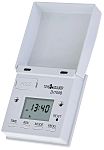 |
Digital |
Weekly time switch LCD display with backlight Dusk function, start <10 Lux |
|
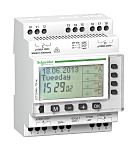 |
Digital Programmable |
Yearly programmable Time Switch24 hour, 7 day & year cycle duration 1 or 4 channel option Cycle programming |
|
 |
Multi-channel |
Text-based menu and programming LCD-Backlight Permanent by date/holiday function Unrestricted block programming |
|
 |
Twilight |
Digital twilight switch Illuminated display Adjustable Lux threshold Adjustable delay times |
FAQs
Do LED Lights Work with Timers?
Timers are fully compatible with energy-saving bulbs and LEDs. However, there may be some flickering or continuous lighting if the correct installation procedures aren’t followed. This is because these kinds of lights are inductive and do not have a resistance characteristic to offer. It results in the timer continually turning on and off as the inductive element is charged and discharged. The small current generated through operation of the switch timer is also sufficient to keep the LEDs dimly lit. This will result in the timer switch fuse blowing at the same time as the light bulb, meaning that the mains must be switched off before replacing a fuse.
There are different ways to overcome the issues associated with the use of LED lights. There may be the option of fitting a large external resistor between the bulb and switch allowing bulbs of 20w to operate. Another solution is to increase the number of bulbs so that the minimum load requirements of the timer switch can be met. It is also advised to use digital timers to power LED lights.
How Does a Light Timer Work?
The light timer is an electrical circuit with an integrated clock. It can be set to turn the lighting on or off at specific times, according to individual requirements. The buying choices include devices featuring single or multiple electrical outlets, as well as those included within a complete security system. There is a wide variety of mechanical and digital timers available.
Digital timer switches are typically connected to electrical circuits powered via the mains supply. They feature timing circuitry, switching devices, and no moving parts. Such switches can be used to turn lights on or off at times selected by the user. Some of these switches allow for the pre-setting and cyclical arrangement of lighting levels.
How Do I Know Which Wire is Neutral When Installing My Switch?
The connection of a neutral wire is required in order for a light timer to remain powered and function correctly. This wire allows remote communication, keeping the correct time, and controlling the load.
You should be able to identify two white neutral wires in the electrical lighting box. These wires may be tied together and capped with a wire fastener. However, such neutral wiring will not be present in all instances. A flathead screwdriver, Phillips head screwdriver, and handheld voltage tester will be required to identify the neutral wiring.
The identification process is as follows:
Step One: Flick the Switch
Test the light switch to ensure that the lighting system is working properly.
Step Two: Power Down
Turn the power off at the circuit breaker and make sure that the light remains off.
Step Three: Remove the Wall Plate
Use the flathead screwdriver to remove the light switch wall plate.
Step Four: Move the Switch
Unscrew the switch from the wall box and pull the switch towards you (taking care not to touch the wires or screws on the side).
Step Five: Use Your Voltage Tester
Use the voltage tester to ensure that the power is off.
Step Six: Conduct a Visual Inspection
Inspect the colours of the wiring within the switch box (two entwined white wires will indicate neutral).
Step Seven: Investigate the Box
If the two control wires are white and black, then inspect the box. The presence of separate white, black and copper leads running into the box will indicate that there is no neutral.
Step Eight: Talk to an Expert
Consult an electrician if you are still in doubt over the presence of neutral wiring.
Popular Brands
Finder
Browse all our available lighting time switches from leading brand Finder and discover the ideal product for your needs.
Dold
If you are looking for staircase light switch timers, Dold has plenty of options suitable for your purposes. Click through to see the full r
Schneider Electric
High-quality and ideal for a range of applications, explore our full range of light switch timers from Schneider Electric.
Siemens
View our full range of timer light switches from Siemens and choose the most suitable product for your requirements.